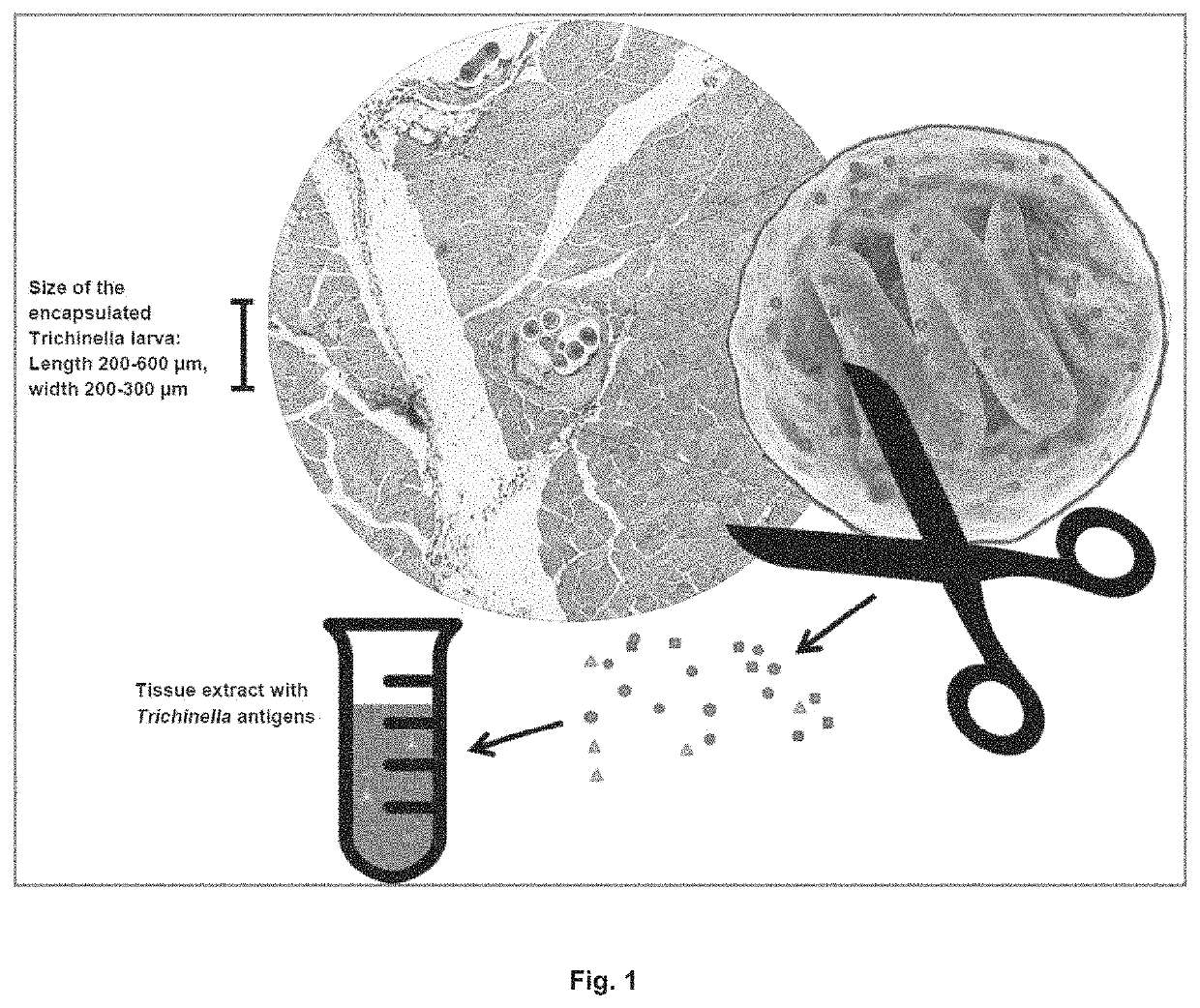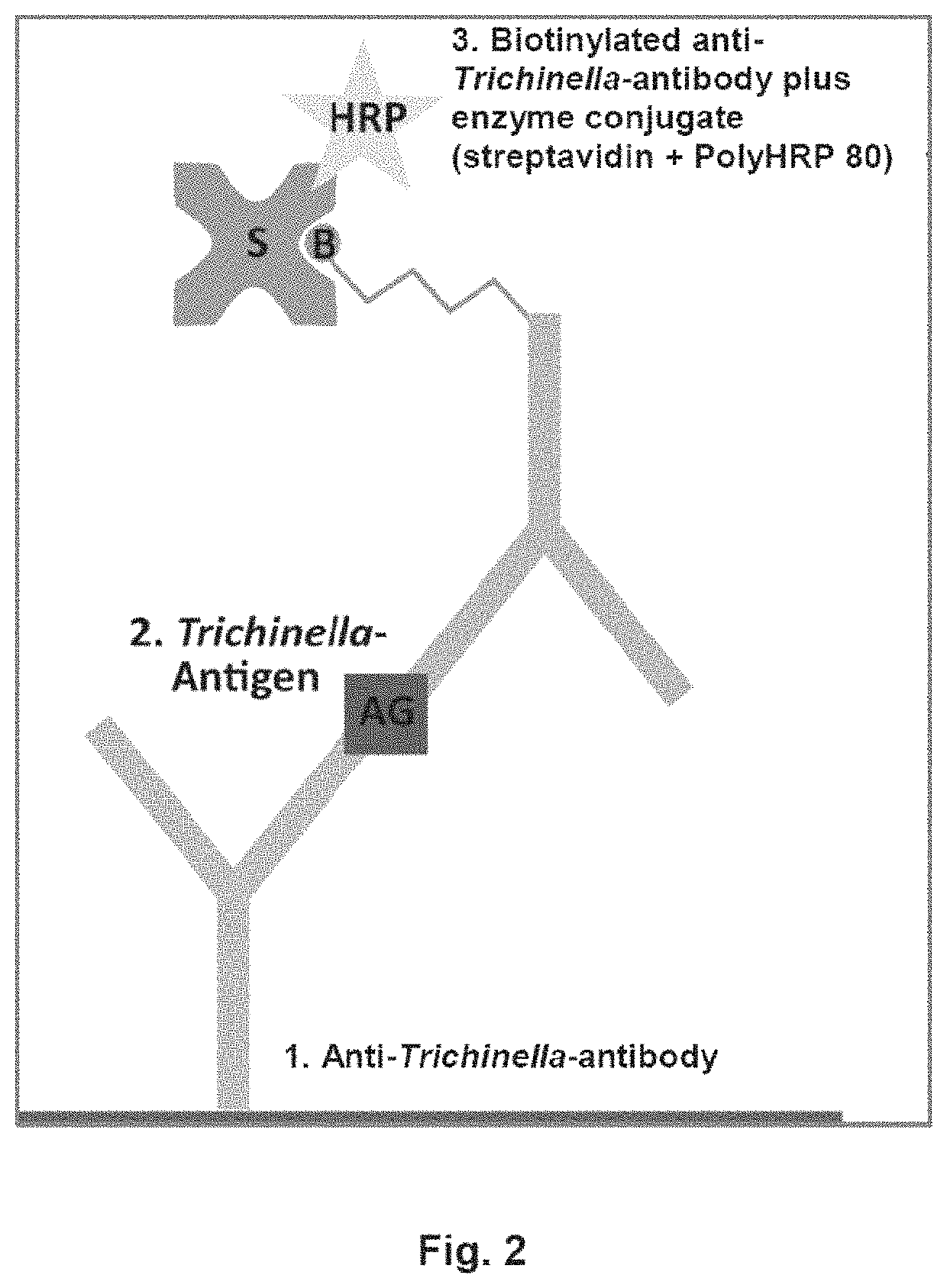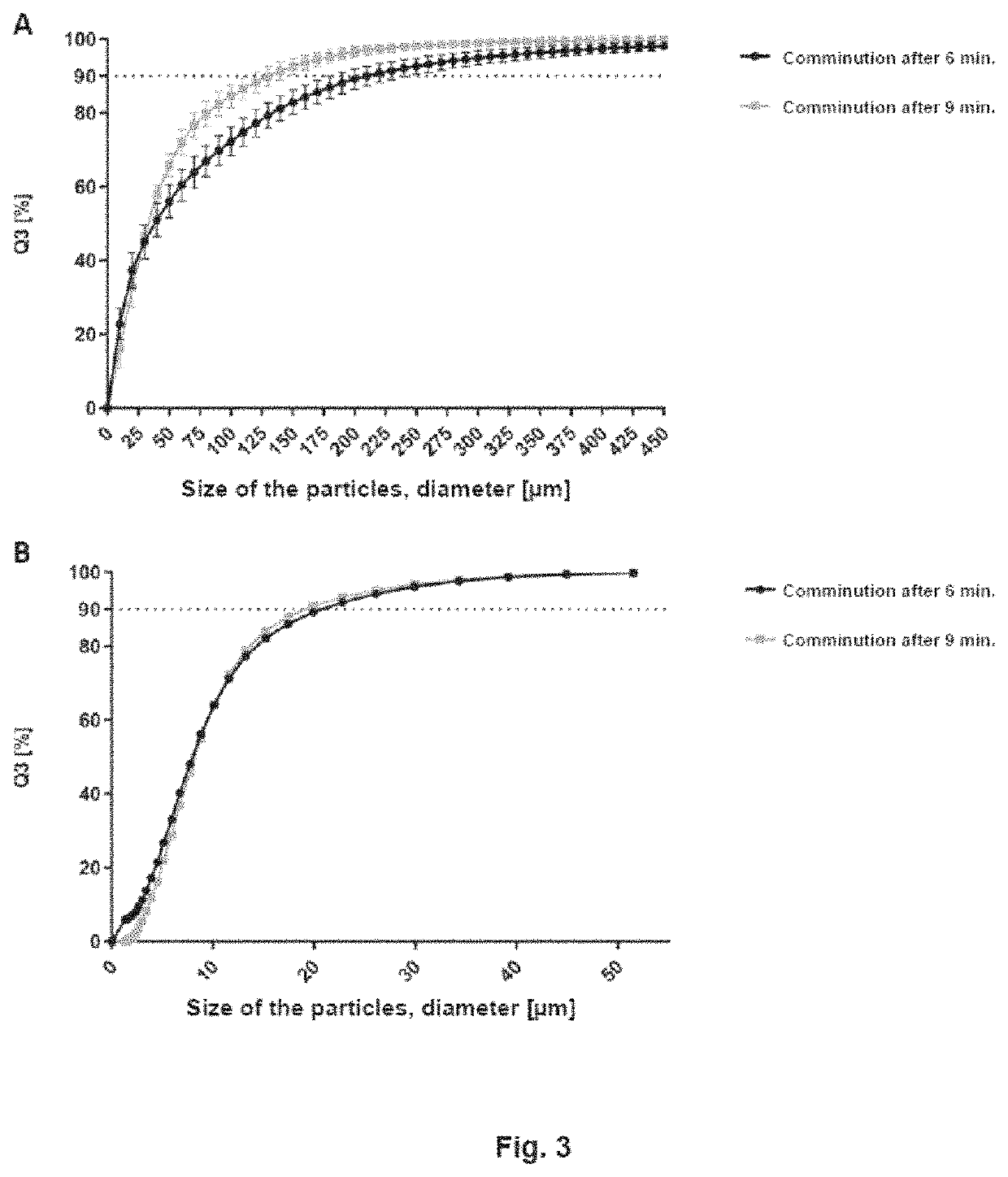Antigen detection of Trichinella
a trichinella and antigen technology, applied in the field of detecting trichinella, can solve the problems of varying the quality of the pepsin used, temperature and time sensitivity, and serious human diseases, and achieve the effect of reducing the width-to-length ratio
- Summary
- Abstract
- Description
- Claims
- Application Information
AI Technical Summary
Benefits of technology
Problems solved by technology
Method used
Image
Examples
example 1
and Methods
Material
[0119]
MaterialNameProduct numberManufacturerEquipmentAutomatedPerkinElmerChemiluminescent AnalyzerSuperFlexBiometra WT 15 042-400BiometrashakerCentro XS3 LB 960Berthold TechnologiesMicroplate LuminometerGM 200 Accessories:03 045 0050RetschGrinding container, stainlesssteelGM 200 Accessories: Knife,02 446 0057RetschserratedHydroFlex ™ MicroplateTecanWasher, Magnetic BeadsIncubator WTBBINDERKnife mill GRINDOMIX GM20 253 0001Retsch200MTS 2 / 4 digital microtiter3208001IKAshakerNovex Mini CellInvitrogenPhotometer: Sunrise ™TecanPower Pac HVBio-RadTable centrifuge: BiofugeHeraeusFrescoWasher ColumbusTecanXCell SureLock ™ Mini-CellThermoFisher ScientificElectrophoresis SystemZentrifuge Avanti ® J-EBeckman Coulter(Rotor: JA-10)Tilt / roll mixerIKAConsumablesiD PAGE Gel, 4-20%ID-PA4201-015EurogentecDynabeads ™ M-280 Tosyl-14203ThermoFisher ScientificactivatedMicrotiter plate LockWell446475-EURThermoFisher ScientificMaxisorbNitrocellulose membrane11306SartoriusNunc ™ F96 Micro...
example 2
Comminution of the Meat Samples
[0138]Immediately following comminution of the pork using the GM200 knife mill, particle size determination was carried out using the Camsizer® XT and the HORIBA LA-960. Sampling took place after 6 or 9 min, respectively. The results of the mass distribution can be seen in FIG. 3, where the particle size [μm] is plotted against Q3 [%] in a diagram. Q3 is the percentage of particles that are smaller than x with reference to the total volume. Since the two particle size measuring devices are based on different measuring methods, the results differ.
[0139]The results of the measurement with the HORIBA LA-960 show that 95% of the particles are <26 μm and all particles are <100 μm. With the Camsizer® XT measurement, 95% of the particles are <300 μm. Only 70% of the meat particles are <100 μm. FIG. 4 shows, as an example, what shape the meat particles have. Due to the muscle fibers and myofibrils, the structure is very fibrous, which clearly lowers the width ...
example 3
etection by Means of a Manually Incubated and Automated Chemiluminescence Immunoassay
[0151]For the manually incubated and bead-based chemiluminescence immunoassay (CLIA), the capture antibodies were coupled to magnetic beads rather than to a microtiter plate. Tosyl-activated Dynabeads' were used for this purpose. The hydrophobic polyurethane surface was activated with tosyl groups, which allowed the antibodies to be covalently bound to the beads. 4 mg of the beads were equilibrated with 1 ml of a 1 M Tris buffer. 30 mM Tris, 0.4 M ammonium sulfate, and 28 μg anti-[TRISP][18H1] antibody (abbreviated as Ab 18H1) were added to the equilibrated beads. The incubation was carried out overnight at 37° C., on a roller mixer. The next day, the beads were washed three times with 1 ml each of StabilCoat® Plus, and then incubated overnight at 37° C., on the roller mixer, to block any remaining reactive functional groups. After blocking, the beads were taken up in fresh StabilCoat® Plus and stor...
PUM
| Property | Measurement | Unit |
|---|---|---|
| diameter | aaaaa | aaaaa |
| diameter | aaaaa | aaaaa |
| diameter | aaaaa | aaaaa |
Abstract
Description
Claims
Application Information
 Login to View More
Login to View More - R&D
- Intellectual Property
- Life Sciences
- Materials
- Tech Scout
- Unparalleled Data Quality
- Higher Quality Content
- 60% Fewer Hallucinations
Browse by: Latest US Patents, China's latest patents, Technical Efficacy Thesaurus, Application Domain, Technology Topic, Popular Technical Reports.
© 2025 PatSnap. All rights reserved.Legal|Privacy policy|Modern Slavery Act Transparency Statement|Sitemap|About US| Contact US: help@patsnap.com



